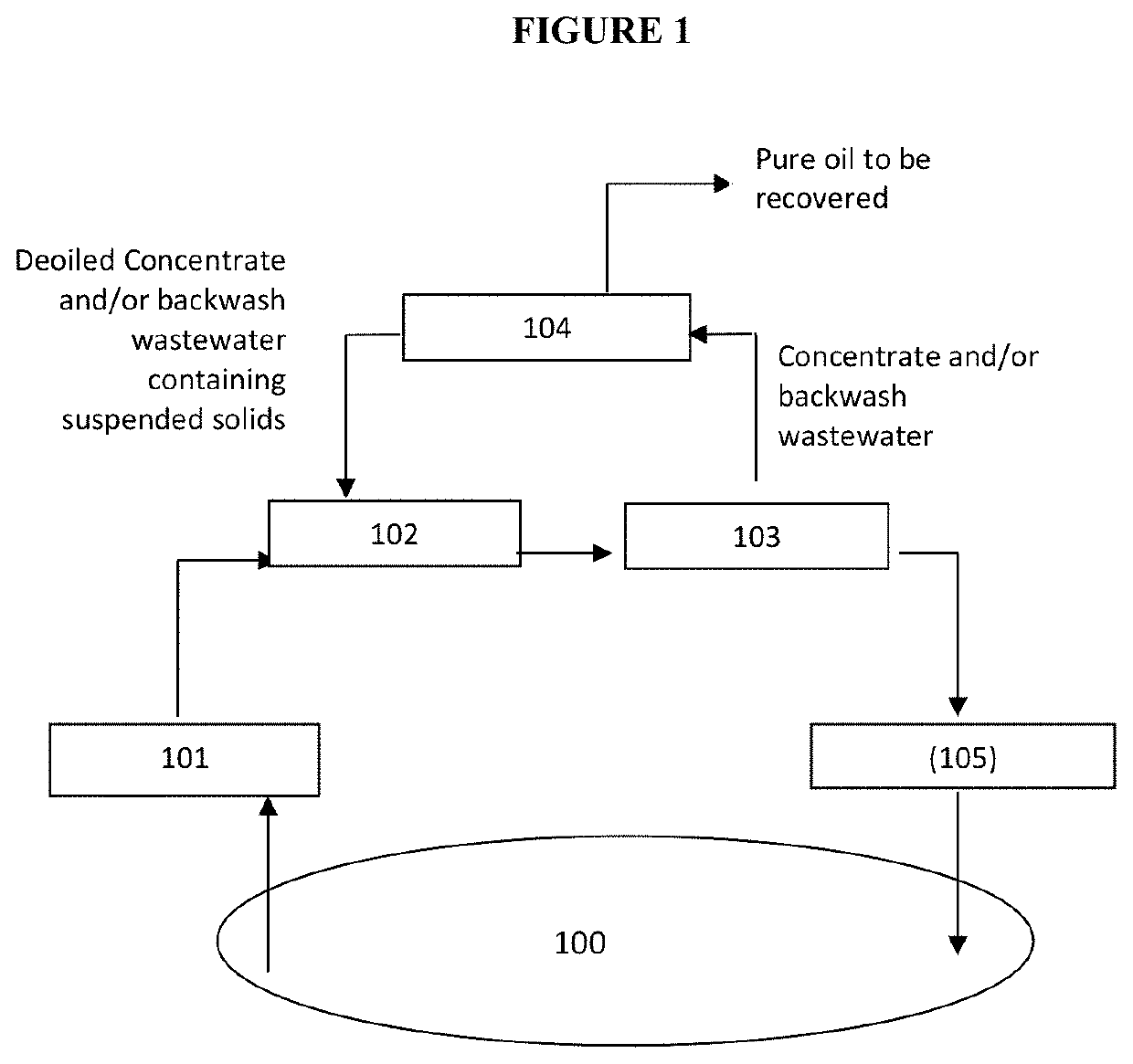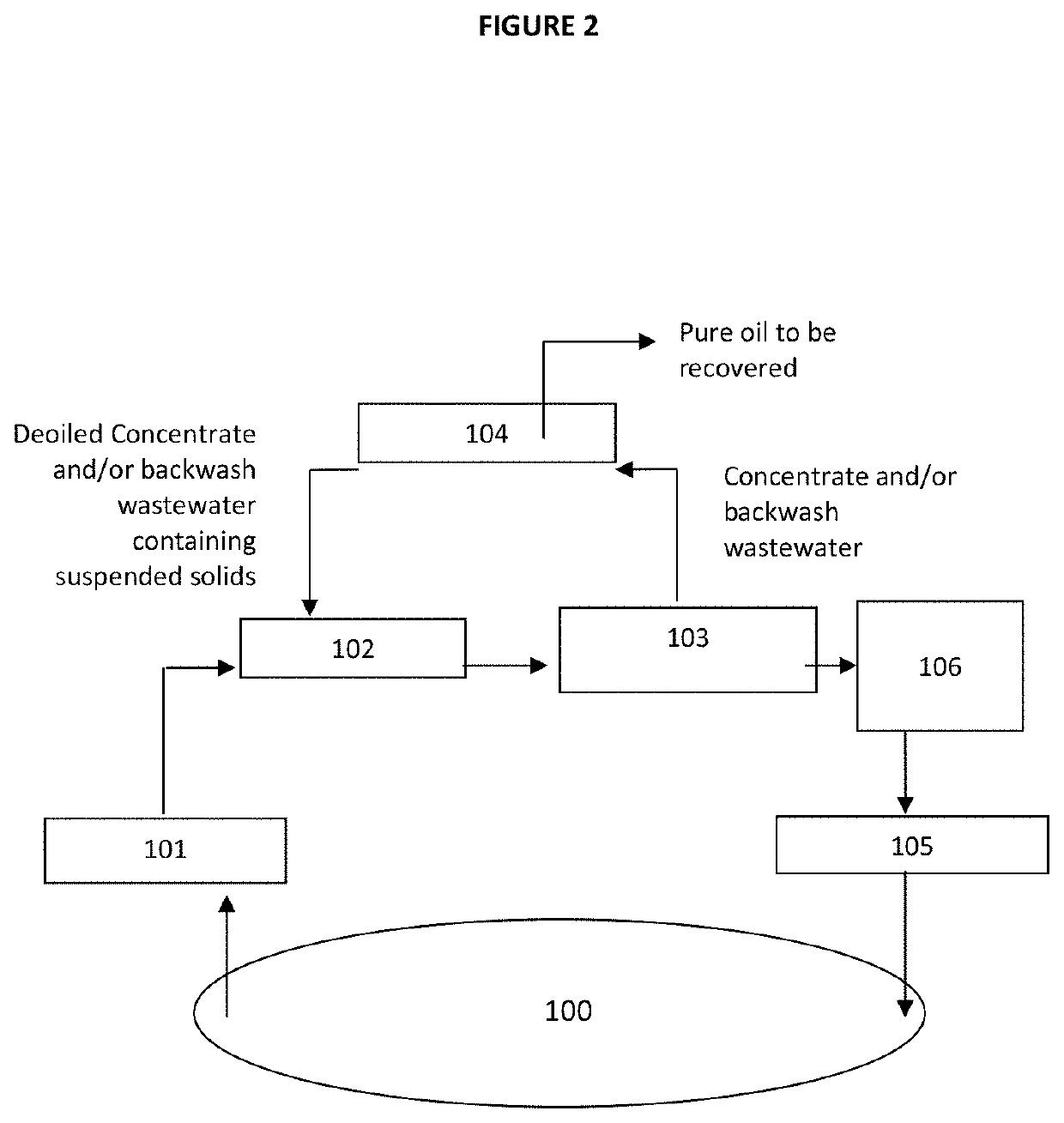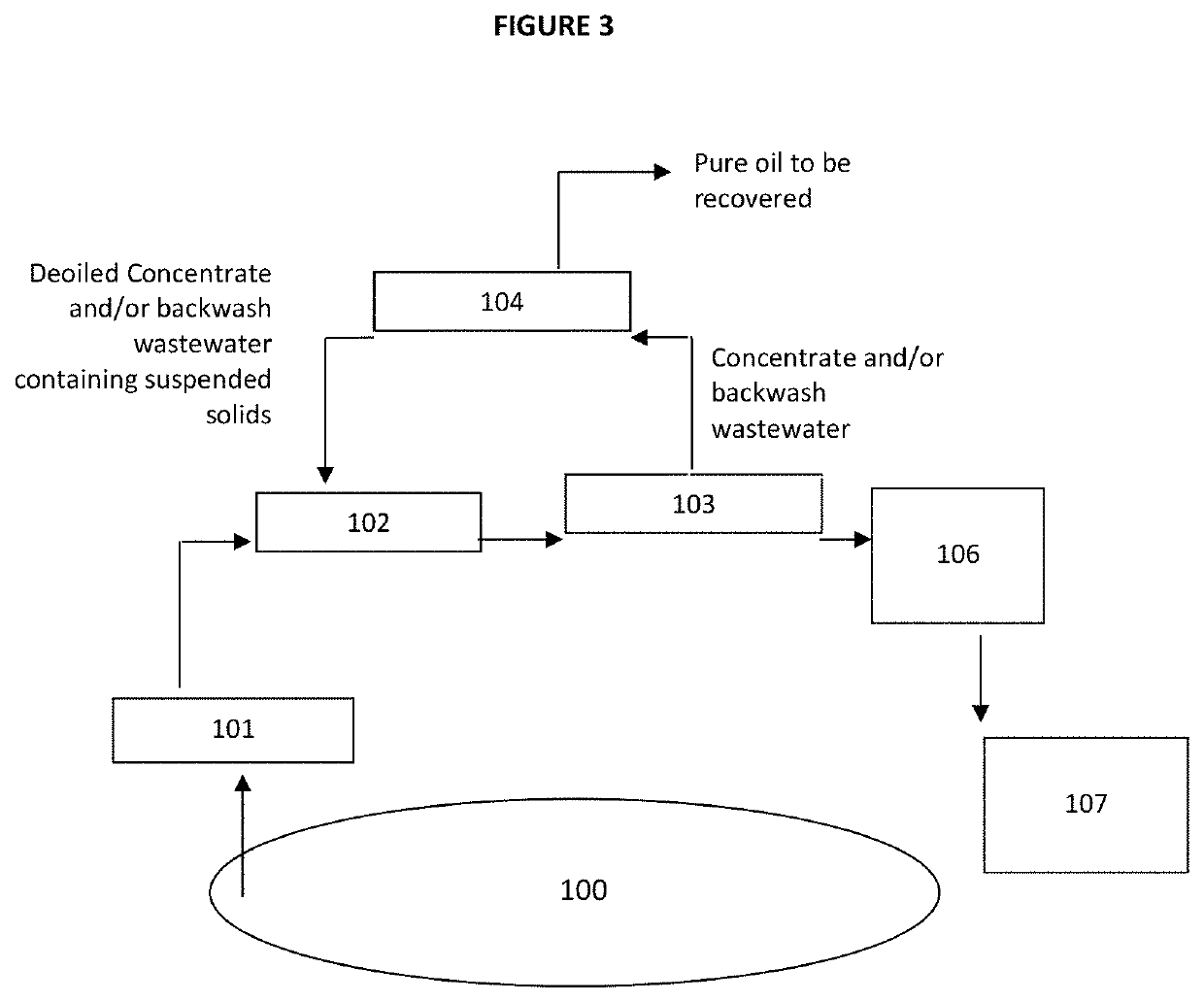Process for treating produced water from an oil and gas field
a technology for producing water and oil & gas, applied in the nature of treatment water, multi-stage water/sewage treatment, separation process, etc., can solve the problems of high volume of by-products generated, high operating cost, and most significant cost relating to the handling and disposal of by-products, etc., to achieve cost reduction
- Summary
- Abstract
- Description
- Claims
- Application Information
AI Technical Summary
Benefits of technology
Problems solved by technology
Method used
Image
Examples
second embodiment
[0061]FIG. 2 is a schematic illustration of the process of the present invention. The steps are identical to those described in FIG. 1 except that the filtrate from the passing through an Ultrafiltration or Microfiltration membrane is submitted in a sixth step to a polishing treatment (106) before returning back through an injection well (105) into the oil-bearing formation (100). The polishing treatment is processed by any methods, for example oxidation, chemical reduction, pH adjustment, carbon filtering or filtration through sand (calcium carbonate) or fabric filters, disinfection, membrane filtration, thermal treatment, adsorption or combination thereof.
third embodiment
[0062]FIG. 3 is a schematic illustration of the process of the present invention. The steps are identical to those described in FIG. 2 except that the filtrate from the passing through an Ultrafiltration or Microfiltration membrane submitted to a polishing treatment (106) is discharged to surface water body (107).
[0063]The method according to the invention removes more than 99% of the non-polar oil (ie water insoluble oil) from the feed stream and recovers more than 80% of the non-polar oil (ie water insoluble oil) as pure oil stream from the UF / MF concentrate.
[0064]Moreover the produced water devoid of undesired compounds contained in the produced water such as suspended solids and oil may be used for injection in the oil bearing formation leading to lower operating expenses.
PUM
 Login to View More
Login to View More Abstract
Description
Claims
Application Information
 Login to View More
Login to View More - R&D
- Intellectual Property
- Life Sciences
- Materials
- Tech Scout
- Unparalleled Data Quality
- Higher Quality Content
- 60% Fewer Hallucinations
Browse by: Latest US Patents, China's latest patents, Technical Efficacy Thesaurus, Application Domain, Technology Topic, Popular Technical Reports.
© 2025 PatSnap. All rights reserved.Legal|Privacy policy|Modern Slavery Act Transparency Statement|Sitemap|About US| Contact US: help@patsnap.com



